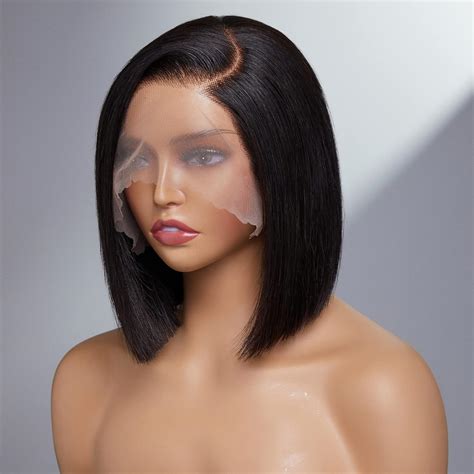Introduction

In today’s modern world, wigs and hair pieces are not only a means of concealing hair loss or thinning but also a fashion statement that empowers individuals to express their unique style and personality. With advancements in technology and materials, wigs and hair pieces have become incredibly sophisticated, offering a natural and seamless look that can transform one’s appearance.
Benefits of Wigs & Hair Pieces
- Versatility: Wigs and hair pieces come in a wide range of styles, colors, and lengths, allowing you to experiment with different looks without damaging your own hair.
- Convenience: Wigs can be put on and taken off in minutes, providing an instant solution for those who want to change their hairstyle or cover up a bad hair day.
- Confidence Boost: A well-fitting wig or hair piece can boost your confidence by providing you with a fuller, healthier-looking head of hair.
- Hair Loss Solutions: Wigs and hair pieces offer a discreet and effective way to conceal hair loss caused by medical conditions, alopecia, or other factors.
Types of Wigs & Hair Pieces
1. Lace Front Wigs: These wigs feature a delicate lace that creates a realistic hairline, giving the appearance of hair growing directly from the scalp.
2. Full Lace Wigs: As the most natural-looking option, full lace wigs are handcrafted with lace that covers the entire cap, allowing for multiple parting options and versatility in styling.
3. Machine Weft Wigs: Machine weft wigs are constructed using a sewing machine to attach hair to a cap. They are known for their durability and affordability.
4. Clip-In Hair Pieces: Clip-in hair pieces are temporary hair extensions that can be added to existing hair to create volume, length, or highlights.
5. Hair Toppers: Hair toppers are designed to cover up thinning hair on the crown or part of the head. They can be easily attached with clips or glue.
Materials
- Human Hair: Human hair wigs and hair pieces offer a natural and realistic look. They can be styled with heat tools and colored or bleached.
- Synthetic Hair: Made from man-made fibers, synthetic hair wigs and hair pieces are more affordable and low-maintenance. They are available in a wide range of colors and styles.
Customization
Wigs and hair pieces can be customized to meet individual preferences and needs. This includes:
- Color: Hairpieces can be dyed or bleached to match your natural hair color or create a bold statement.
- Length: Wigs and hair pieces come in various lengths, from short pixie cuts to long, flowing locks.
- Style: Wigs and hair pieces can be styled to achieve a wide range of looks, including curls, waves, braids, and updos.
Maintenance
- Washing: Wigs and hair pieces should be washed regularly to keep them clean and fresh. The frequency of washing depends on the type and frequency of use.
- Styling: Heat tools can be used to style wigs and hair pieces, but it’s important to use a heat protectant spray to prevent damage.
- Storage: When not in use, wigs and hair pieces should be stored on a wig stand or in a breathable bag to prevent tangling and damage.
Tips & Tricks
- Choose the Right Wig Cap: The wig cap should fit snugly on your head to prevent the wig from slipping or moving around.
- Use Hairspray Sparingly: Excessive hairspray can make the wig stiff and unnatural-looking.
- Detangle Regularly: Use a wide-toothed comb or brush to detangle your wig or hair piece to prevent tangles and matting.
- Avoid Heat Damage: Limit the use of heat tools on synthetic hair pieces, as excessive heat can melt or damage the fibers.
Common Mistakes to Avoid
- Choosing the Wrong Size: A wig that is too large or too small will look unnatural and uncomfortable.
- Over-Styling: Excessive styling can damage the wig or hair piece and make it look artificial.
- Neglecting Maintenance: Regular washing and maintenance are essential to keep your wig or hair piece looking its best.
- Sleeping in a Wig: Wearing a wig to bed can put unnecessary stress on the hair and cap, leading to damage.
FAQs
- Are wigs and hair pieces noticeable? With advancements in technology, modern wigs and hair pieces can look incredibly natural when properly applied and maintained.
- How often should I replace my wig? The lifespan of a wig or hair piece depends on the quality of materials, frequency of use, and maintenance practices. Human hair wigs can last up to two years with proper care, while synthetic wigs typically last for one to two years.
- Can I customize the color and style of my wig? Yes, many wigs and hair pieces can be dyed or bleached to match your hair color or style. Some wig makers also offer custom cutting and styling services.
- Are wigs and hair pieces comfortable to wear? Well-fitting wigs and hair pieces are designed for comfort and can be worn for extended periods.
- Can I swim in a wig? It is generally not recommended to swim in a wig, as water can damage the hair fibers and weaken the adhesive.
- Can I use heat tools on wigs and hair pieces? Yes, heat tools can be used on human hair wigs, but they should be used with caution and a heat protectant spray. Avoid using heat tools on synthetic wigs, as excessive heat can melt or damage the fibers.
